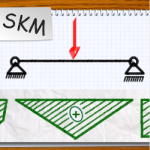
 Der MOOC „Gesellschaftliche Aspekte der Informationstechnologie“ auf iMooX geht nun in die siebte Woche. Diesesmal sind die Expertin Margarete Grimus und der Experte Michael Kopp an der Reihe. Die Themen? Mobile Learning und MOOC. Ich denke spannend genug um mitzumachen.
Der MOOC „Gesellschaftliche Aspekte der Informationstechnologie“ auf iMooX geht nun in die siebte Woche. Diesesmal sind die Expertin Margarete Grimus und der Experte Michael Kopp an der Reihe. Die Themen? Mobile Learning und MOOC. Ich denke spannend genug um mitzumachen.
Also unbedingt vorbei schauen und mitdiskutieren – der Einstieg in den MOOC ist jederzeit noch möglich.
[Link zum Kurs]
[publication] Learning and Teaching with Mobile Devices: An Approach in Higher Secondary Education in Ghana
Our publication about „Learning and Teaching with Mobile Devices: An Approach in Higher Secondary Education in Ghana“ got published in the International Journal of Mobile and Blended Learning.
Abstract:
While many developing nations find Internet-based e-learning unsuitable for their needs mobile learning methods – specifically those involving the use of mobile-phones for both formal and informal learning – hold great promise for them (Grimus et al, 2013b). In this paper chances and challenges introduced by mobile devices to support improvement and transformation of education in a Senior High School in Ghana are examined. The field-study draws attention to the local situation, looking at infrastructure and teachers and students attitudes in using digital learning material. This paper presents results of a pilot project at a Senior High Technical School in Ghana, by addressing the issue how mobile devices can be integrated in learning and teaching. Based on our results we conclude that teachers and students hold great promise for using mobile devices for learning. Together they developed content based on the national curriculum, available for eReaders and mobile phones.
Learning and Teaching with Mobile Devices: An Approach in Higher Secondary Education in Ghana. by Martin
Klicken Sie auf den unteren Button, um den Inhalt von www.scribd.com zu laden.
Reference: Grimus, M., Ebner, M. (2015) Learning and Teaching with Mobile Devices: An Approach in Higher Secondary Education in Ghana. International Journal of Mobile and Blended Learning (IJMBL), 7(2), 17-32. doi:10.4018/ijmbl.2015040102
[publication] Mobile Applications for Math Education – How Should They Be Done?
My contribution about „Mobile Applications for Math Education – How Should They Be Done?“ as part of the book Mobile Learning and Mathematics. Foundations, Design, and Case Studies got published.
Abstract:
Math education in elementary schools is a necessity. In this publication we introduce different math applications for iPhone and iPad developed by students at Graz University of Technology. Both, the technical as well as the pedagogical strategy of these apps are described. Furthermore, a close look at the HCI guidelines are taken and finally enhanced with some crucial facts that in principle an app is able to serve as a learning app for elementary school children. It can be summarized that the successful use of math apps in classroom is more than just a playing with the first app that comes along; it is about a careful design of a didactical approach based on an appropriate learning strategy.
Mobile Applications for Math Education – How Should They Be Done? by Martin
Klicken Sie auf den unteren Button, um den Inhalt von www.scribd.com zu laden.
Reference: Ebner, M. (2015) Mobile Learning and Mathematics. Foundations, Design, and Case Studies. Crompton, H., Traxler, J. (ed.). Routledge. New York and London. pp. 20-32
btw, Happy Easter to all 🙂
[presentation, master] TeamSketch
Über die kollaborative Zeichenapp hatte ich schon hier berichtet, jetzt darf ich auch noch die Präsentation der Masterarbeit von Michael vorstellen. Er hat natürlich erfolgreich bestanden 🙂
Klicken Sie auf den unteren Button, um den Inhalt von www.slideshare.net zu laden.

